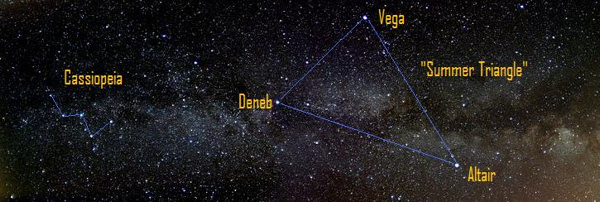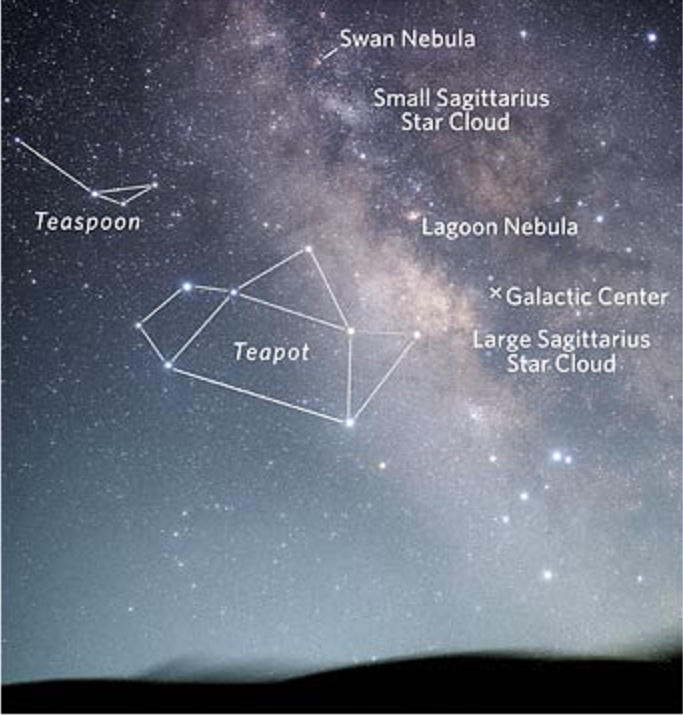Every year in August – from either the Northern or Southern Hemisphere – you can look in the evening hours toward the center of our Milky Way galaxy. It’s located in the direction of the constellation Sagittarius the Archer, which happens to contain a famous asterism – or noticeable pattern of stars – called the Teapot. In 2020, there are two bright planets in this same direction in space. Jupiter is brighter than any star. Saturn is fainter than Jupiter, but still as bright as the brightest stars.
In 2020, the Teapot is found to the west of Jupiter and Saturn.
If you’re blessed with a dark sky, finding them all will be easy. In a dark sky, you’ll see a broad boulevard of stars – the edgewise view into our own Milky Way galaxy – which broadens and brightens in the direction of the Teapot and the planets. From the Northern Hemisphere, you’ll be looking south around mid-to-late evening for Jupiter, Saturn and the Teapot. From the Southern Hemisphere, look closer to overhead.
Don’t know the planets and don’t have a dark sky? The chart below via AstroBob expands the view to include the constellation Scorpius, which is to the west of the Teapot. This pattern is relatively bright and easy to spot for its curved Scorpion’s Tail.

We can’t really see into the center of our Milky Way galaxy, which lies some 26,000 light-years away. The galactic center is heavily veiled by intervening stars, star clusters and nebulae (vast clouds of gas and dust). But – when we look toward the constellation Sagittarius – we are gazing toward the galactic center in space.
If your sky is dark enough, this direction in space is a sight to behold!
The Teapot asterism makes up the western half of the constellation Sagittarius the Archer. Modern eyes have an easier time envisioning a teapot than an Archer with a drawn bow. See the sky chart of Sagittarius below.

From temperate latitudes in the Northern Hemisphere, it’s pretty easy to make out the Summer Triangle asterism rather high in the eastern sky at nightfall. This huge star formation consists of three brilliant stars – Vega, Deneb and Altair – and can often withstand the glare of the full moon or light-polluted city. If you are otherwise lost on some starry night but can find the Summer Triangle, let this signpost star formation escort you to the Teapot …


Bottom line: Try finding the Teapot asterism in the constellation Sagittarius the Archer. The center of our Milky Way galaxy is located in this direction of space. In 2020, you’ll also find two planets here, Jupiter and Saturn.











